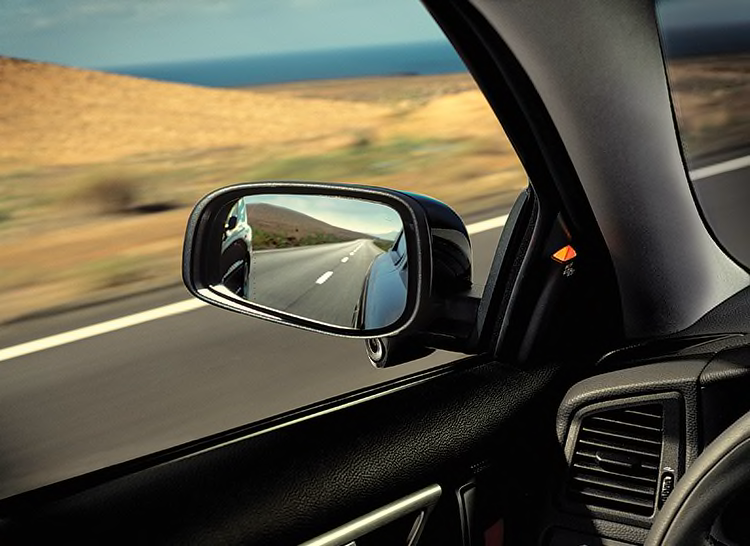Many people equate car safety with crashworthiness. But Consumer Reports believes the technology that helps you avoid the car crash in the first place is just as valuable.
But choosing a safe car can be challenging when that technology gets lost in a showroom alphabet soup of acronyms that salespeople themselves may undervalue or underemphasize.
Here are our Top 10 advanced safety features, in order of preference. Even if they come bundled into a package with other tech items that you might not want, and that can raise the car's price, we believe these potentially lifesaving options are worth the extra cash.
1. Forward-Collision Warning (FCW)
Using laser, radar, or cameras, these systems assess surrounding conditions, as well as the speed of your approach to a potential impact with a vehicle ahead of you. They will alert you with visual and/or audible signals to a potential car crash, allowing you time to react. Some systems also sense and alert you to the potential for a collision with pedestrians.
CR's take: We want to see forward-collision warning standard in every car. It is important enough that we will award bonus points in our Ratings if the car has it as a standard feature.
2. Automatic Emergency Braking (AEB)
These systems add to the benefits of forward-collision warning. AEB will sense a potential collision, and if you don't react in time, the car will initiate braking.
CR's take: Another of our favorites, auto-braking is a technology we would like to see in every car. An automaker that makes this feature standard will get extra credit in our scores because it has proved to reduce injuries and deaths. Offering it as option will not get credit.

3. Blind-Spot Warning
This technology detects and warns of vehicles you can't see. The system scans the sides of the vehicle to warn of vehicles' presence in blind spots. It alerts drivers with a visible, audible, and/or tactile alert to indicate that it's unsafe to merge or change lanes.
CR's take: Blind-spot warning is not only one of CR's top three favorite safety features but our readers rate it at the top of their favorites as well. It makes a big difference in highway safety.
4. Rear Cross-Traffic Alert
These systems sense traffic that may cross your path as you reverse, which can be helpful when you're backing out of a parking space or driveway. Some systems will automatically brake for the driver to avoid an object.
CR's take: With a large number of accidents occurring in reverse at low speeds and in parking lots, we like that drivers can be assisted by rear cross-traffic alerts that help when navigating tight spots or where visibility is limited.
5. Backup Cameras
This camera-based assistance system is activated when the vehicle is placed in reverse. The rear view is displayed in a center console screen or rear-view mirror. Some vehicles have a parking assistance system that visually diagrams a lined guided parking path to track your steering angle. Cross-traffic alerts and overhead view cameras can also be integrated into the camera view.
CR's take: With many back-over accidents in recent years, we are glad to see it as standard equipment on all 2018 models, and every year after. Along with other safety advocates, Consumer Reports pushed for the law requiring the cameras and sued the government to get final rules in place.

6. Automatic High Beams
This function automatically switches from low to high beams, and back again, for improved nighttime visibility as conditions warrant.
CR's take: Many drivers don't opt for the added visibility of high beams as often as they should. These systems make the switch for you. They improve visibility and automatically reduce the glare of your headlights as oncoming cars approach.
7. Lane-Keeping Assist (LKA)
In addition to sensing when you leave your lane, this technology will induce mild steering input to put you back into your lane.
CR's take: It's most useful on highways, where the driver can become sleepy or distracted. But it can be overly intrusive on rural two-lane roads. Courteously giving a wide berth to a cyclist or pedestrian may cause the system to steer the car back toward the curb, scaring everyone involved.
8. Adaptive Cruise Control (ACC)
By using lasers, radar, cameras, or a combination of those systems, ACC systems automatically adjust vehicle speed in order to maintain a safe distance from the vehicle in front of you and prevent a potential car crash. If traffic slows, some systems will bring the car to a complete stop and automatically come back to speed when traffic gets going again.
CR's take: ACC systems often include forward-collision warning, which can further reduce some of the stress of commuting.
9. Parking-Assist Systems
These are a series of sensors in the front, rear, or both bumpers that alert you at low speeds that cars, light poles, walls, shrubbery, and other obstacles are getting close.
CR's take: These can make it easier to maneuver in tight parking lots, saving your car from damage.
10. Lane-Departure Warning (LDW)
The use of cameras, lasers, or infrared sensors assists you with sound or vibration warnings to let you know when you have drifted out of your lane.
CR's take: LDW systems work best on freeways and open-lane highways but require more refinement because of the number of false alerts we've experienced, especially on narrow or winding roads.
Avoidance Maneuver Testing
How important is car handling when it comes to emergency maneuvering? 'Consumer 101' TV show host, Jack Rico, joins Consumer Reports' experts at the test track to find out.
Editor's Note: This article also appeared in the April 2016 issue of Consumer Reports magazine.


















